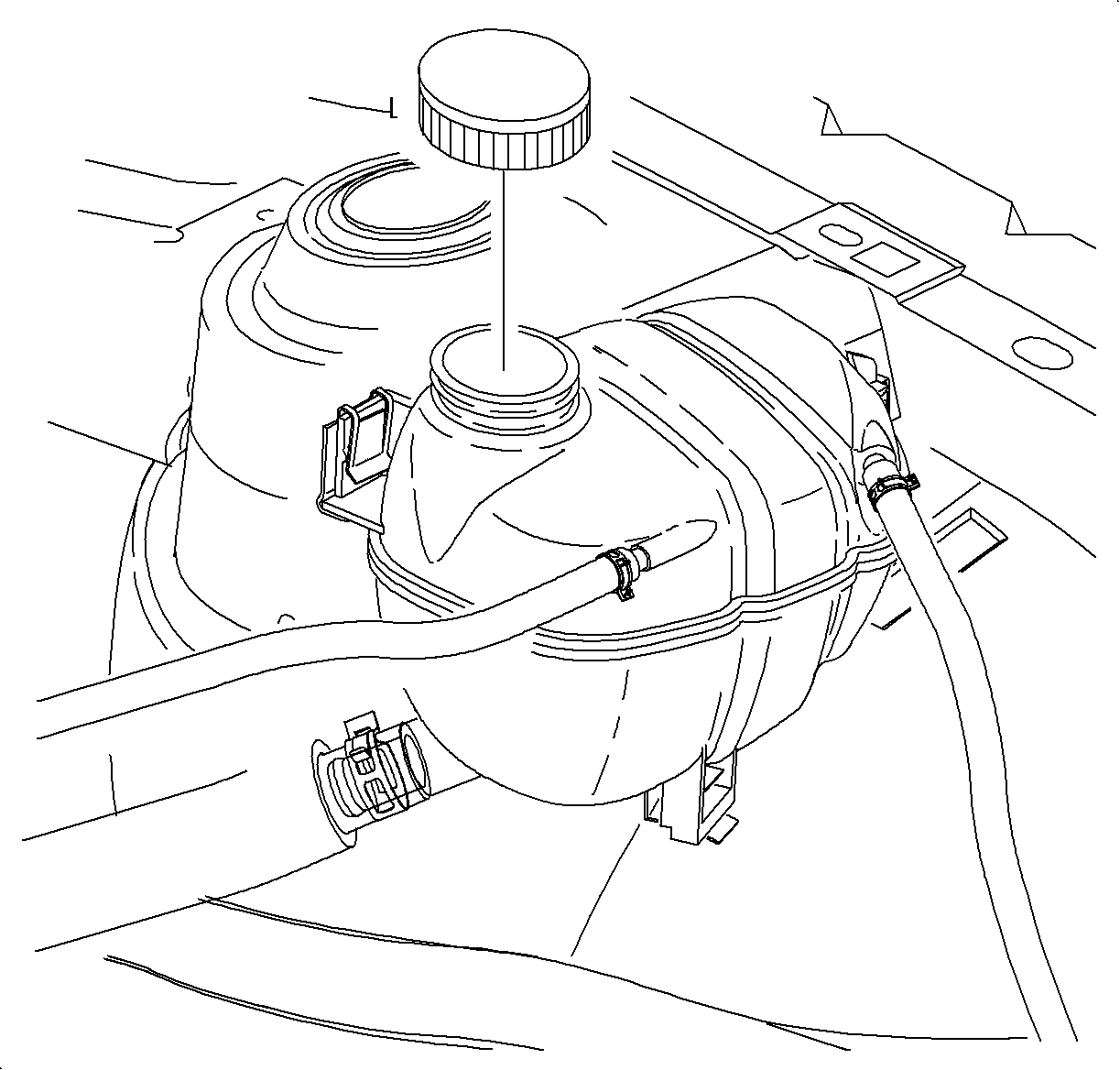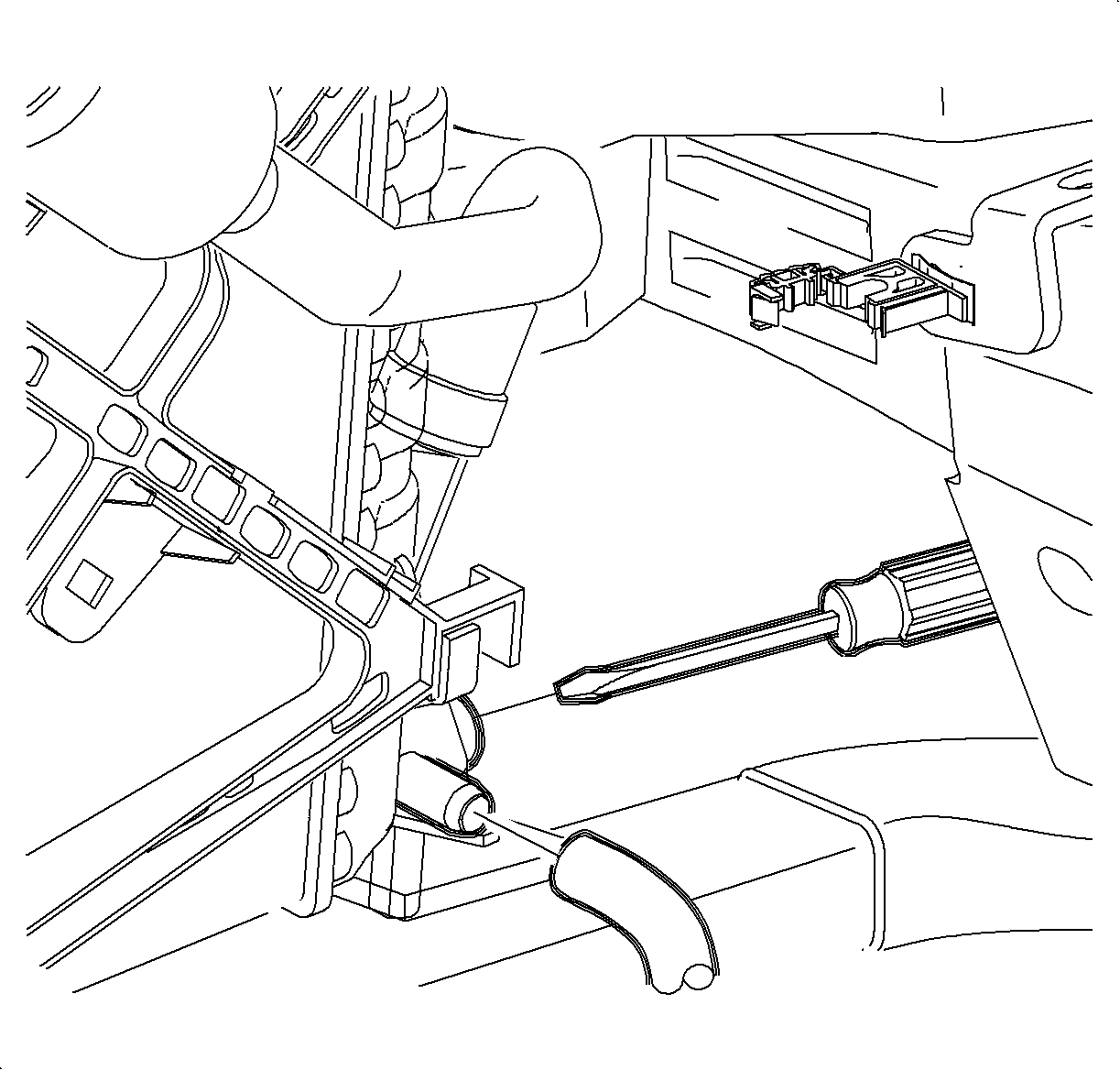Coolant Level
The engine coolant level can be checked at the engine coolant surge tank. The coolant level should be checked when the system is cool and not under pressure. The coolant level should be at the cold line (surge tank seam) on the coolant tank. If the coolant level is low, check for system leaks, and then slowly open the coolant surge tank cap. Add the coolant until the level reaches the Cold line (surge tank seam).
Coolant Quality
Inspect the quality of coolant. There should not be any rust deposits, scale, or oil in the surge tank or on the coolant cap. If the coolant is excessively dirty, the cooling system should be flushed and the cap replaced.
Draining Coolant
- Remove the coolant cap from the coolant surge tank.
- Raise the vehicle.
- Remove the lower cradle splash shield fasteners and remove.
- Slide a pliable piece of hose with an inside diameter of 3/8 in. over the radiator drain tube.
- Route the hose rearward and down to an approved coolant container.
- Use a flat blade screwdriver or a pliers to open the radiator drain valve and the drain coolant.
- When completely drained, close the coolant drain valve and remove the drain hose.
- Install the lower cradle splash shield and fasteners.
Caution: To avoid the danger of being burned, do not remove the cap while the engine, radiator, and surge tank are still hot. Scalding fluid and steam can be blown out under pressure.

Caution: Refer to Vehicle Lifting Caution in the Preface section.


Important: Failure to use a drain hose will result in uncontrolled coolant flow direction.
Important: A 7.6 L (8 qt) coolant container will be needed.
Important: Open the drain valve 1-2 turns only.
Approximately 3.5 L (4 qt) of coolant can be drained from the radiator. Additional coolant will remain in some cooling system components.

Tighten
Tighten the lower cradle splash shield fasteners to 5 N·m(44 lb in).
